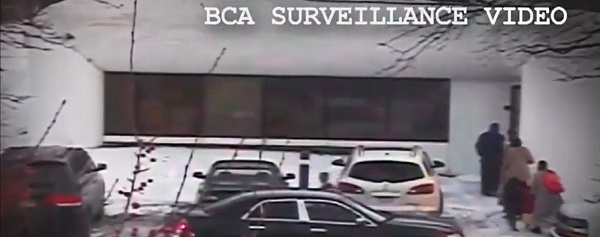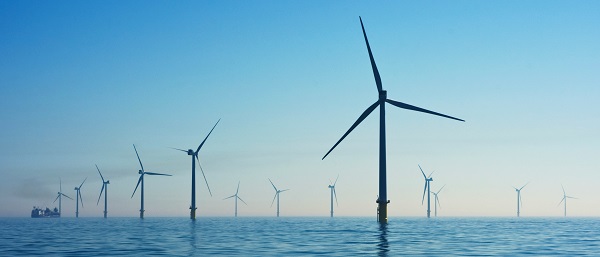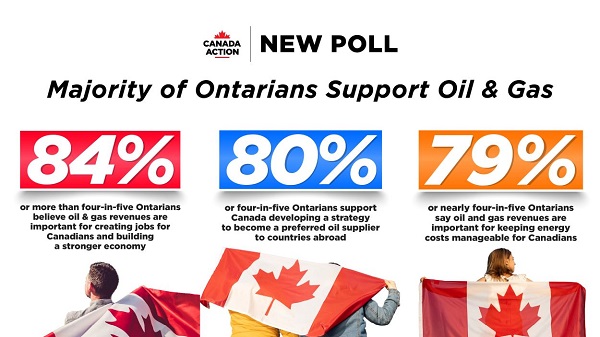National
Randy Boissonnault and the Liberal Scandal That Won’t Go Away

Standing Committee on Indigenous and Northern Affairs: How Fraud, False Identity Claims, and Liberal Entitlement Expose a System Rigged Against Canadians
Ladies and gentlemen, today, we take a closer look at what happens when the carefully constructed facade of Justin Trudeau’s Liberal Party crumbles. This isn’t just a scandal about one man’s lies—it’s about a government-wide culture of entitlement, deception, and corruption that prioritizes Liberal insiders over the hardworking Canadians they claim to represent.
Why are we here? Because a man named Randy Boissonnault—a former Liberal cabinet minister and trusted Trudeau ally—has been caught at the center of a scandal involving fraudulent business dealings, false claims of Indigenous identity, and federal contracts stolen from real Indigenous businesses. The setting? The Standing Committee on Indigenous and Northern Affairs, where Boissonnault faced over two hours of questioning from MPs determined to get to the truth.
But did we get the truth? Absolutely not. What we got was a masterclass in Liberal arrogance, evasion, and deflection.
At the heart of this controversy is Boissonnault’s involvement in a company called Global Health Imports (GHI), which falsely claimed to be Indigenous-owned in order to win lucrative federal contracts. For years, Boissonnault portrayed himself as a “non-status adopted Cree” based on vague family anecdotes. This label, of course, conveniently blurred the lines, allowing him to gain credibility in Indigenous spaces while avoiding legal scrutiny. Not only did GHI fraudulently secure taxpayer money meant for Indigenous businesses, but Boissonnault’s name and supposed Indigenous heritage were plastered all over Liberal Party campaign materials. For years, the Liberals actively promoted him as Indigenous, exploiting the very communities they claim to champion.
When the media and whistleblowers finally exposed the truth, Boissonnault resigned from his cabinet position. And now, he’s here, at INAN, supposedly to set the record straight. Spoiler alert: he didn’t.
Boissonnault’s opening statement was a lesson in political deflection. He apologized—not for the harm done to Indigenous communities or Canadian taxpayers, but for the “confusion” around his identity. He insisted he never claimed Indigenous status, despite evidence to the contrary, and described his use of the term “non-status adopted Cree” as an effort to honor his adoptive family’s supposed heritage—a claim Indigenous researchers have outright denied.
When pressed on his involvement with GHI, Boissonnault claimed ignorance. He told the committee he left the company in 2021 and had no idea his name was being used to secure fraudulent contracts. Really? We’re supposed to believe that a man who co-owned 50% of the company and whose name was actively used in business dealings was completely unaware of its activities? Either he’s lying, or he’s astonishingly incompetent.
It gets worse. When asked why he hasn’t sued his former business partner, Mr. Anderson, for allegedly using his name without consent, Boissonnault offered the weakest excuse imaginable: he’s “consulting legal counsel.” Months have passed since this scandal broke, and he still hasn’t taken a single step to clear his name. If someone stole your identity to commit fraud, wouldn’t you act immediately?
Thankfully, not everyone in the room was willing to let Boissonnault off the hook. Conservative MPs Michael Barrett and Martin Shields led the charge, relentlessly exposing Boissonnault’s contradictions and demanding accountability. Barrett zeroed in on Boissonnault’s failure to take legal action against GHI, calling it a clear sign of either complicity or cowardice. Shields turned his focus to the systemic failures that allowed this fraud to happen in the first place, pointing out the Liberal government’s negligence in safeguarding programs designed to support Indigenous communities.
Meanwhile, Bloc MP Nathalie Sinclair-Déguin and NDP MP Lori Idlout focused on the harm done to Indigenous communities. They highlighted how fraudulent activities like GHI’s undermine trust, reconciliation, and real opportunities for Indigenous businesses. They also demanded systemic reforms, like stricter oversight and verification processes, to prevent future abuses.
Of course, no Liberal scandal would be complete without the party’s MPs running interference. Enter Ben Carr and Anna Gainey. Carr used his time to praise Boissonnault’s “allyship” and steer the conversation away from fraud and deception. Gainey, who didn’t even bother to show up in person, framed the controversy as a “learning opportunity” for Boissonnault and the government. Neither of them asked a single hard question. They weren’t there to seek answers—they were there to protect their colleague and the Liberal Party brand.
Final Thoughts
Let’s be blunt. What we witnessed at the INAN hearing wasn’t just a scandal about Randy Boissonnault—it was a damning indictment of Justin Trudeau’s Liberal regime and its entire culture of corruption, entitlement, and betrayal of the Canadian people.
Think about what’s at stake here. We’re not talking about a minor oversight or a simple mistake. We’re talking about a Liberal insider who exploited a sacred cause—reconciliation with Indigenous peoples—for personal and political gain. A man who co-founded a company that defrauded taxpayers, deprived Indigenous businesses of opportunities, and damaged trust between the government and the communities it claims to support. And yet, instead of taking responsibility, he shows up to a committee hearing and feeds us a steady diet of deflection and excuses.
But let’s not just focus on Boissonnault. What about the rest of the Liberal Party? A party that promoted him as Indigenous in their campaigns, used his fabricated narrative to boost their image, and now refuses to hold him accountable. What we saw at the hearing was a carefully orchestrated performance. Liberal MPs didn’t ask hard questions because they didn’t want answers. Their job was to protect Boissonnault, protect the party, and protect their grip on power.
And here’s the tragic part: the real victims of this scandal aren’t sitting in Ottawa’s plush committee rooms. They’re the Indigenous entrepreneurs who lost out on contracts, the taxpayers who unknowingly funded this fraud, and the millions of Canadians who believed in a government that promised to do better.
This isn’t just a Randy Boissonnault problem. This is a Liberal problem. A systemic problem. A Trudeau problem. It’s about a government that’s so addicted to power, so comfortable with corruption, that they don’t even bother hiding it anymore.
But here’s the good news: Canadians are waking up. They’re seeing through the Liberal lies and realizing that the system isn’t broken—it’s rigged. Rigged for the insiders, the cronies, and the friends of Justin Trudeau.
So what happens next? That’s up to you, Canada. You have a choice. You can let this scandal fade into the background like so many others before it. Or you can demand better. Demand accountability. Demand a government that works for you, not for itself.
Please consider subscribing to The Opposition with Dan Knight .
Support our journalism and enjoy the full experience, upgrade your subscription.
Business
The Real Reason Canada’s Health Care System Is Failing

From the Frontier Centre for Public Policy
By Conrad Eder
Conrad Eder supports universal health care, but not Canada’s broken version. Despite massive spending, Canadians face brutal wait times. He argues it’s time to allow private options, as other countries do, without abandoning universality.
It’s not about money. It’s about the rules shaping how Canada’s health care system works
Canada’s health care system isn’t failing because it lacks funding or public support. It’s failing because governments have tied it to restrictive rules that block private medical options used in other developed countries to deliver timely care.
Canada spends close to $400 billion a year on health care, placing it among the highest-spending countries in the Organization for Economic Co-operation and Development (OECD). Yet the system continues to struggle with some of the longest waits for care, the fewest doctors per capita and among the lowest numbers of hospital beds in the OECD. This is despite decades of spending increases, including growth of 4.5 per cent in 2023 and 5.7 per cent in 2024, according to estimates from the Canadian Institute for Health Information.
Canadians are losing confidence that government spending is the solution. In fact, many don’t even think it’s making a difference.
And who could blame them? Median health care wait times reached 30 weeks in 2024, up from 27.7 weeks in 2023, which was up from 27.4 weeks in 2022, according to annual surveys by the Fraser Institute.
Nevertheless, politicians continue to tout our universal health care system as a source of national pride and, according to national surveys, 74 per cent of Canadians agree. Yet only 56 per cent are satisfied with it. This gap reveals that while Canadians value universal health care in principle, they are frustrated with it in practice.
But it isn’t universal health care that’s the problem; it’s Canada’s uniquely restrictive version of it. In most provinces, laws restrict physicians from working simultaneously in public and private systems and prohibit private insurance for medically necessary services covered by medicare, constraints that do not exist in most other universal health care systems.
The United Kingdom, France, Germany and the Netherlands all maintain universal health care systems. Like Canada, they guarantee comprehensive insurance coverage for essential health care services. Yet they achieve better access to care than Canada, with patients seeing doctors sooner and benefiting from shorter surgical wait times.
In Germany, there are both public and private hospitals. In France, universal insurance covers procedures whether patients receive them in public hospitals or private clinics. In the Netherlands, all health insurance is private, with companies competing for customers while coverage remains guaranteed. In the United Kingdom, doctors working in public hospitals are allowed to maintain private practices.
All of these countries preserved their commitment to universal health care while allowing private alternatives to expand choice, absorb demand and deliver better access to care for everyone.
Only 26 per cent of Canadians can get same-day or next-day appointments with their family doctor, compared to 54 per cent of Dutch and 47 per cent of English patients. When specialist care is needed, 61 per cent of Canadians wait more than a month, compared to 25 per cent of Germans. For elective surgery, 90 per cent of French patients undergo procedures within four months, compared to 62 per cent of Canadians.
If other nations can deliver timely access to care while preserving universal coverage, so can Canada. Two changes, inspired by our peers, would preserve universal coverage and improve access for all.
First, allow physicians to provide services to patients in both public and private settings. This flexibility incentivizes doctors to maximize the time they spend providing patient care, expanding service capacity and reducing wait times for all patients. Those in the public system benefit from increased physician availability, as private options absorb demand that would otherwise strain public resources.
Second, permit private insurance for medically necessary services. This would allow Canadians to obtain coverage for private medical services, giving patients an affordable way to access health care options that best suit their needs. Private insurance would enable Canadians to customize their health coverage, empowering patients and supporting a more responsive health care system.
These proposals may seem radical to Canadians. They are not. They are standard practice everywhere else. And across the OECD, they coexist with universal health care. They can do the same in Canada.
Alberta has taken an important first step by allowing some physicians to work simultaneously in public and private settings through its new dual-practice model. More Canadian provinces should follow Alberta’s lead and go one step further by removing legislative barriers that prohibit private health insurance for medically necessary services. Private insurance is the natural complement to dual practice, transforming private health care from an exclusive luxury into a viable option for Canadian families.
Canadians take pride in their health care system. That pride should inspire reform, not prevent it. Canada’s health care crisis is real. It’s a crisis of self-imposed constraints preventing our universal system from functioning at the level Canadians deserve.
Policymakers can, and should, preserve universal health care in this country. But maintaining it will require a willingness to learn from those who have built systems that deliver universality and timely access to care, something Canada’s current system does not.
Conrad Eder is a policy analyst at the Frontier Centre for Public Policy.
Business
Dark clouds loom over Canada’s economy in 2026

From the Fraser Institute
The dawn of a new year is an opportune time to ponder the recent performance of Canada’s $3.4 trillion economy. And the overall picture is not exactly cheerful.
Since the start of 2025, our principal trading partner has been ruled by a president who seems determined to unravel the post-war global economic and security order that provided a stable and reassuring backdrop for smaller countries such as Canada. Whether the Canada-U.S.-Mexico trade agreement (that President Trump himself pushed for) will even survive is unclear, underscoring the uncertainty that continues to weigh on business investment in Canada.
At the same time, Europe—representing one-fifth of the global economy—remains sluggish, thanks to Russia’s relentless war of choice against Ukraine, high energy costs across much of the region, and the bloc’s waning competitiveness. The huge Chinese economy has also lost a step. None of this is good for Canada.
Yet despite a difficult external environment, Canada’s economy has been surprisingly resilient. Gross domestic product (GDP) is projected to grow by 1.7 per cent (after inflation) this year. The main reason is continued gains in consumer spending, which accounts for more than three-fifths of all economic activity. After stripping out inflation, money spent by Canadians on goods and services is set to climb by 2.2 per cent in 2025, matching last year’s pace. Solid consumer spending has helped offset the impact of dwindling exports, sluggish business investment and—since 2023—lacklustre housing markets.
Another reason why we have avoided a sharper economic downturn is that the Trump administration has, so far, exempted most of Canada’s southbound exports from the president’s tariff barrage. This has partially cushioned the decline in Canada’s exports—particularly outside of the steel, aluminum, lumber and auto sectors, where steep U.S. tariffs are in effect. While exports will be lower in 2025 than the year before, the fall is less dramatic than analysts expected 6 to 8 months ago.
Although Canada’s economy grew in 2025, the job market lost steam. Employment growth has softened and the unemployment rate has ticked higher—it’s on track to average almost 7 per cent this year, up from 5.4 per cent two years ago. Unemployment among young people has skyrocketed. With the economy showing little momentum, employment growth will remain muted next year.
Unfortunately, there’s nothing positive to report on the investment front. Adjusted for inflation, private-sector capital spending has been on a downward trajectory for the last decade—a long-term trend that can’t be explained by Trump’s tariffs. Canada has underperformed both the United States and several other advanced economies in the amount of investment per employee. The investment gap with the U.S. has widened steadily since 2014. This means Canadian workers have fewer and less up-to-date tools, equipment and technology to help them produce goods and services compared to their counterparts in the U.S. (and many other countries). As a result, productivity growth in Canada has been lackluster, narrowing the scope for wage increases.
Preliminary data indicate that both overall non-residential investment and business capital spending on machinery, equipment and advanced technology products will be down again in 2025. Getting clarity on the future of the Canada-U.S. trade relationship will be key to improving the business environment for private-sector investment. Tax and regulatory policy changes that make Canada a more attractive choice for companies looking to invest and grow are also necessary. This is where government policymakers should direct their attention in 2026.
-

 Alberta1 day ago
Alberta1 day agoThe Canadian Energy Centre’s biggest stories of 2025
-

 Business1 day ago
Business1 day agoResurfaced Video Shows How Somali Scammers Used Day Care Centers To Scam State
-

 Bruce Dowbiggin2 days ago
Bruce Dowbiggin2 days agoIn Contentious Canada Reality Is Still Six Degrees Of Hockey
-

 Business1 day ago
Business1 day agoDisclosures reveal Minnesota politician’s husband’s companies surged thousands-fold amid Somali fraud crisis
-

 Business13 hours ago
Business13 hours agoDark clouds loom over Canada’s economy in 2026
-

 Business2 days ago
Business2 days agoDOOR TO DOOR: Feds descend on Minneapolis day cares tied to massive fraud
-

 Addictions10 hours ago
Addictions10 hours agoCoffee, Nicotine, and the Politics of Acceptable Addiction
-

 Business2 days ago
Business2 days agoCanada needs serious tax cuts in 2026











